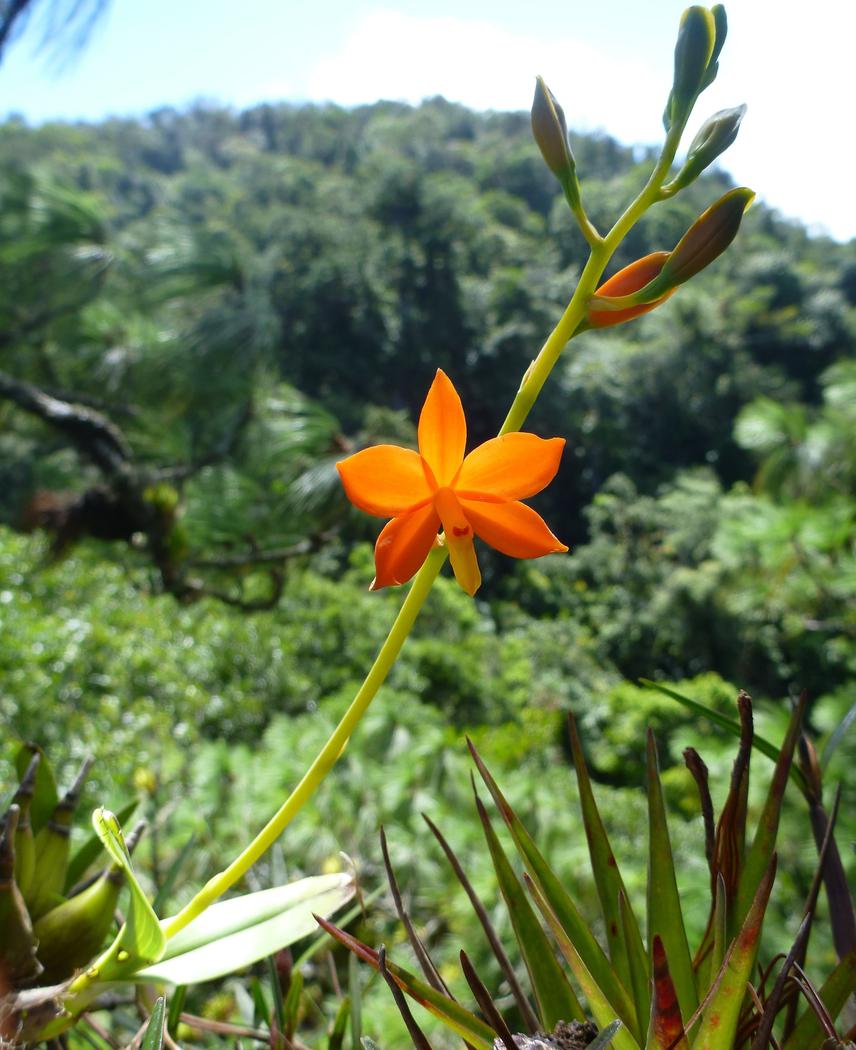Sven Peter Batke
The project aims are:
i) to provide baseline data on vascular canopy epiphytes,
ii) to assess how environmental factors between different sites affect the epiphytes distribution, diversity and composition and
iii) to identify whether some structural and environmental differences between canopy trees might have been affected by historical hurricane occurrences. Moreover, the data will be used to support the on-going conservation efforts within Cusuco National Park as part of the Operation Wallacea biodiversity project.

Prosthechea vitelina.
The flora of tropical America is one of the richest and least-known in the world. Epiphytes in particular contribute substantially to the plant diversity within these regions (Gentry and Dodson 1987) and in some instances even exceed the terrestrial plant flora [52% of the total vascular flora in an Andean rain forest, Kelly et al. (2004)]. Moreover, they may show high levels of endemism [Peru=24% of the total vascular epiphyte flora are endemic, Bolivia=28% (Ibisch 1996), Ecuador=25% (Picker and Jorgensen 2001)]. Although epiphytes have been studied extensively in the neotropics, most research has been undertaken in South American countries including Brazil (Rodrigode et al. 2009), Bolivia (Kessler 2000b, a, Krömer et al. 2005, Gradstein et al. 2008), Peru (Ibisch 1996), Ecuador (Bussmann 2001, Muñoz and Kϋper 2001, Picker and Jorgensen 2001) and Colombia (Sugden and Robins 1979, Gradstein and Pocs 1989, Wolf 1993), with fewer researches being carried out in Central America such as Mexico (Hietz and Hietz-Seifert 1995, Wolf and Alejandro 2003) and Costa Rica (Holz and Gradstein 2005, Cardelus et al. 2006, Köhler et al. 2010). Epiphytes in other Central American countries such as Honduras have been largely neglected.
As a result, this project aims to assess the ecology and distribution of vascular epiphytes within a small region of Honduras (Cusuco National Park) using modern rope access techniques. Data will be collected following an adjusted standard sampling protocol for vascular epiphytes (Wolf et al. 2009). Plots are located along a prior developed historical hurricane impact gradient, which was developed using Digital Elevation Maps (DEM), historical hurricane tracking data from the National Oceanic and Atmospheric Administration (NOAA) and modelled hurricane wind directions and strengths (Batke et al. 2013 under review). Within each 150x150m plot a total of six large mature trees (Zotz and Bader 2011) will be surveyed for epiphyte diversity, biomass and composition. Moreover, multiple environmental and structural factors (e.g. temperature, humidity, bark texture, canopy openness, branch damage, etc.) of each individual tree/branch will be recorded, to help to disentangle composition and diversity changes along different gradients.